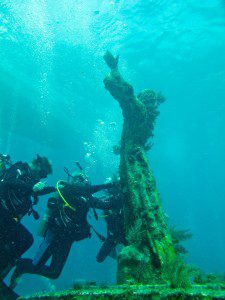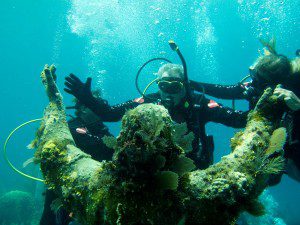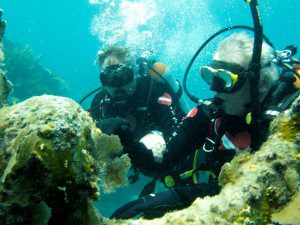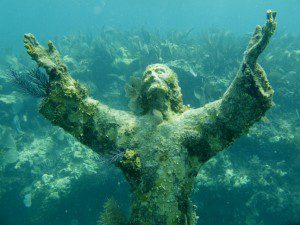Update: This story was picked up by the Miami Herald. They used my photos to illustrate the story. You can see Page 1 here. and Page 2 here.
Last week I was in Key Largo, Florida working on a new project when my friend Jim Elliot called and said he had an amazing opportunity for me. Jim is the founder and president of Diveheart, a non-profit organization that takes people with disabilities scuba diving. I know when Jim calls with an opening like that, it is going to be interesting. I was right.
 The second interesting part of the story was Gabe was instrumental in bringing the Christ of the Abyss statue to Florida in 1962, but never had the chance to dive on it. Now, 51 years later, he was going to dive on the statue for the first time. You can hear Gabe tell the story himself in the video Gabe’s Story.
The second interesting part of the story was Gabe was instrumental in bringing the Christ of the Abyss statue to Florida in 1962, but never had the chance to dive on it. Now, 51 years later, he was going to dive on the statue for the first time. You can hear Gabe tell the story himself in the video Gabe’s Story.
 To make the dive happen, DJ Wood, owner of Rainbow Reef Dive Centers donated six spots on one of his dive boats. Chuck Baldwin, owner of US 1 Scuba in Pompano Beach, Florida and a Diveheart volunteer, also happened to be a Cressi Dealer so he joined Spataro on the dive and outfitted him in Cressi gear so he could experience the result of his efforts. Baldwin and Wilhelmina Stanton of the Scuba Sirens lead Spataro on the dive and it was an emotional day for him. He spent about 20 minutes touching the statue, feeling the head and holding its hands.
To make the dive happen, DJ Wood, owner of Rainbow Reef Dive Centers donated six spots on one of his dive boats. Chuck Baldwin, owner of US 1 Scuba in Pompano Beach, Florida and a Diveheart volunteer, also happened to be a Cressi Dealer so he joined Spataro on the dive and outfitted him in Cressi gear so he could experience the result of his efforts. Baldwin and Wilhelmina Stanton of the Scuba Sirens lead Spataro on the dive and it was an emotional day for him. He spent about 20 minutes touching the statue, feeling the head and holding its hands.


















